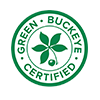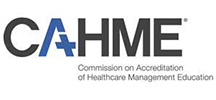 Jiyoung Lee and her team are studying water samples taken during the swimming season from the Ottawa National Wildlife Refuge, a 6,704-acre preserved area located on the south shore of Lake Erie. They are examining the public health significance of understanding the pathways of pathogen transmission from contamination sources to human exposure in the lake front environments.
Jiyoung Lee and her team are studying water samples taken during the swimming season from the Ottawa National Wildlife Refuge, a 6,704-acre preserved area located on the south shore of Lake Erie. They are examining the public health significance of understanding the pathways of pathogen transmission from contamination sources to human exposure in the lake front environments.
Lee, associate professor in the Division of Environmental Health Sciences, received an award from the Ohio Water Development Authority for a study titled “Ecosystem services of wetlands for protecting microbial water quality of Ohio beaches from contamination sources.”
“This grant will help me explore my research idea and see whether it is feasible or not,” Lee said. “This project is really meaningful for me and my lab because we are studying Lake Erie, which is a very important drinking and recreational water source for not only Ohio, but for Canada and Michigan as well.”
Lee says this project is especially important because it has a human component to it and links the environment to human health.
Wetlands are known for reducing chemical contaminants, for example, excess nutrients from agricultural runoff. However, they attract lots of wildlife and the wildlife sheds pathogens there. As the water goes through the wetlands, it finally reaches the lake and beaches where there’s human interaction and recreational activity. So in this study we want to explore whether wetlands can provide public health-related ecosystem services, especially reducing cyanotoxins (toxins produced by blue-green algae) and enteric pathogens (disease-causing bacteria of the intestines).
Ecosystem services are benefits to humans that come from nature. Wildlife and nearby agricultural runoff are known pollutants to the waterways with multiple contaminants, and Lee says keeping human and wildlife health hazards at bay requires a stable ecosystem and wetland.
“Public health risks due to recreational water exposure can be better explained by understanding the integrated health risks,” Lee said.
The wetlands of Lake Erie serve as a natural filter for water runoff from farm fields and in turn help to reduce algae which feed on the phosphorus in the runoff. Over the past several years, algal blooms have been a major issue for western Lake Erie, threatening the health of animals and humans and deterring recreation.




